Trong-Hieu Nguyen Mau
Sing-On-Your-Beat: Simple Text-Controllable Accompaniment Generations
Nov 03, 2024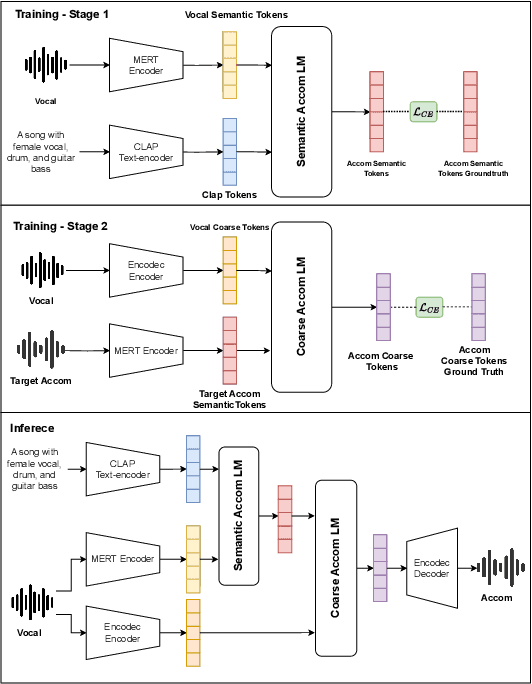



Abstract:Singing is one of the most cherished forms of human entertainment. However, creating a beautiful song requires an accompaniment that complements the vocals and aligns well with the song instruments and genre. With advancements in deep learning, previous research has focused on generating suitable accompaniments but often lacks precise alignment with the desired instrumentation and genre. To address this, we propose a straightforward method that enables control over the accompaniment through text prompts, allowing the generation of music that complements the vocals and aligns with the song instrumental and genre requirements. Through extensive experiments, we successfully generate 10-second accompaniments using vocal input and text control.
M^2UNet: MetaFormer Multi-scale Upsampling Network for Polyp Segmentation
Jun 14, 2023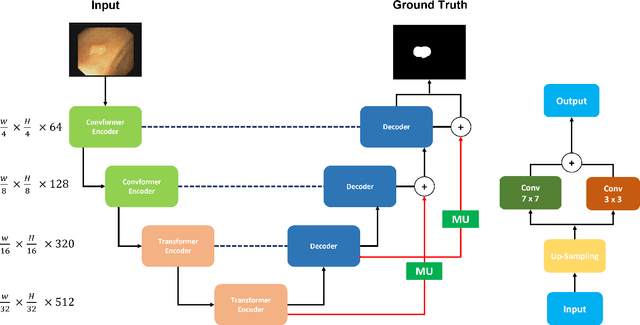
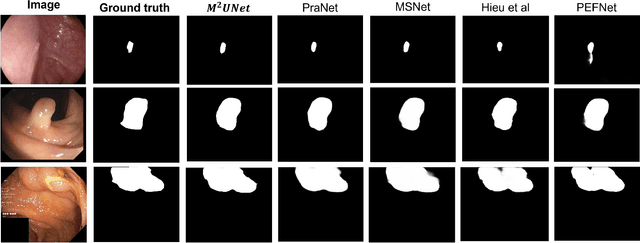
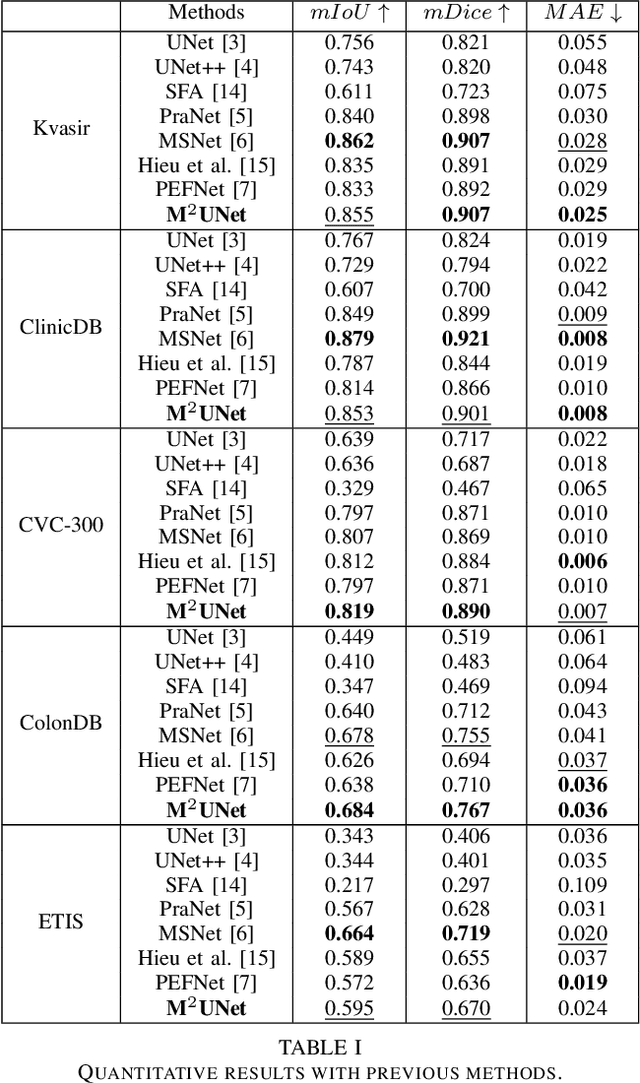
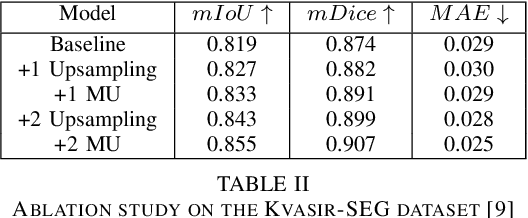
Abstract:Polyp segmentation has recently garnered significant attention, and multiple methods have been formulated to achieve commendable outcomes. However, these techniques often confront difficulty when working with the complex polyp foreground and their surrounding regions because of the nature of convolution operation. Besides, most existing methods forget to exploit the potential information from multiple decoder stages. To address this challenge, we suggest combining MetaFormer, introduced as a baseline for integrating CNN and Transformer, with UNet framework and incorporating our Multi-scale Upsampling block (MU). This simple module makes it possible to combine multi-level information by exploring multiple receptive field paths of the shallow decoder stage and then adding with the higher stage to aggregate better feature representation, which is essential in medical image segmentation. Taken all together, we propose MetaFormer Multi-scale Upsampling Network (M$^2$UNet) for the polyp segmentation task. Extensive experiments on five benchmark datasets demonstrate that our method achieved competitive performance compared with several previous methods.
Multi Kernel Positional Embedding ConvNeXt for Polyp Segmentation
Jan 17, 2023Abstract:Medical image segmentation is the technique that helps doctor view and has a precise diagnosis, particularly in Colorectal Cancer. Specifically, with the increase in cases, the diagnosis and identification need to be faster and more accurate for many patients; in endoscopic images, the segmentation task has been vital to helping the doctor identify the position of the polyps or the ache in the system correctly. As a result, many efforts have been made to apply deep learning to automate polyp segmentation, mostly to ameliorate the U-shape structure. However, the simple skip connection scheme in UNet leads to deficient context information and the semantic gap between feature maps from the encoder and decoder. To deal with this problem, we propose a novel framework composed of ConvNeXt backbone and Multi Kernel Positional Embedding block. Thanks to the suggested module, our method can attain better accuracy and generalization in the polyps segmentation task. Extensive experiments show that our model achieves the Dice coefficient of 0.8818 and the IOU score of 0.8163 on the Kvasir-SEG dataset. Furthermore, on various datasets, we make competitive achievement results with other previous state-of-the-art methods.
EfficientNet for Brain-Lesion classification
Aug 09, 2022Abstract:In the development of technology, there are increasing cases of brain disease, there are more treatments proposed and achieved a positive result. However, with Brain-Lesion, the early diagnoses can improve the possibility for successful treatment and can help patients recuperate better. From this reason, Brain-Lesion is one of the controversial topics in medical images analysis nowadays. With the improvement of the architecture, there is a variety of methods that are proposed and achieve competitive scores. In this paper, we proposed a technique that uses efficient-net for 3D images, especially the Efficient-net B0 for Brain-Lesion classification task solution, and achieve the competitive score. Moreover, we also proposed the method to use Multiscale-EfficientNet to classify the slices of the MRI data
 Add to Chrome
Add to Chrome Add to Firefox
Add to Firefox Add to Edge
Add to Edge